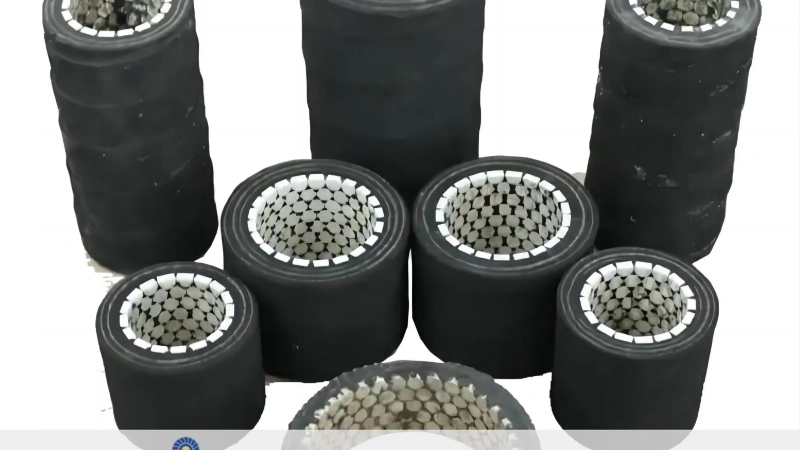In the realm of crafting ceramic rubber lining boards, precise control over the vulcanization temperature emerges as a pivotal factor for achieving unparalleled results. The process of vulcanization plays a central role in overcoming the inherent challenges posed by wear-resistant ceramic lining boards, specifically their susceptibility to high brittleness and low impact resistance.

At the core of this transformative process lies the chemical dance of rubber macromolecules with cross-linking agents, notably sulfur. Heat serves as the catalyst, birthing a three-dimensional network structure termed rubber vulcanization. Before this alchemical bonding, rubber molecules exist without intermolecular cross-linkages, resulting in lackluster physical and mechanical properties. Introducing vulcanizing agents, followed by heat treatment or alternative methodologies, orchestrates a symphony of cross-linking among rubber molecules, ushering in significant improvements in properties such as tensile stress, elasticity, hardness, and tensile strength.
Within the intricate dance of vulcanization, temperature, time, and pressure stand out as the triumvirate dictating the fate of the final product. Notably, temperature reigns supreme, exerting the most profound influence on the performance of the end result. Delving into the nuances of vulcanization temperature entails a meticulous examination of various facets:
Natural Rubber (NR): Find optimal conditions at 140-150°C, with caution exercised in peroxide vulcanization and efficient sulfur systems not surpassing 160°C. Unique formulations, featuring accelerators like ZDC, may opt for vulcanization at around 110°C.
Butadiene Rubber, Isoprene Rubber, and Chloroprene Rubber: The sweet spot lies within 150-160°C, steering clear of exceeding 170°C.
Butadiene-Styrene Rubber, Nitrile Rubber: Applicability starts at 150°C and rises but cautiously avoids breaching 190°C.
Butyl Rubber, Ethylene-Propylene Rubber: Generally selected at 160-180°C, with a ceiling set at 200°C.
Silicone Rubber, Fluoro Rubber: Embarking on a two-stage vulcanization journey, the initial stage settles at 170-180°C, while the second stage elevates the temperature to 200-230°C. Specific ranges may be chosen within 4-24 hours based on process requirements.
Polyurethane Rubber: The initial stage unfolds at 100-120°C, followed by the second stage at 100-150°C.
Conventional Sulfur Vulcanization: Operates optimally within the range of 130-160°C.
Efficient, Semi-efficient Sulfur Vulcanization Systems: Thrive in the temperature range of 160-165°C.
Non-sulfur systems such as peroxides and resins: Find their sweet spot in the domain of 170-180°C.
Beyond the rubber type and chosen vulcanization system, practical operating conditions and the desired product performance wield significant influence over the vulcanization temperature. Precision adjustments, grounded in both theoretical foundations and empirical experience, become imperative in selecting the most fitting vulcanization temperature to ensure optimal outcomes. In the symphony of ceramic rubber lining creation, mastering the art of temperature control becomes the key to unlocking excellence.

Submit your demand,
we will contact you ASAP.

Sanxin New Materials Co., Ltd. focus on producing and selling ceramic beads and parts such as grinding media, blasting beads, bearing ball, structure part, ceramic wear-resistant liners, Nanoparticles Nano Powder

